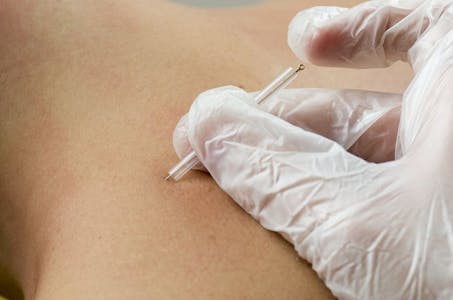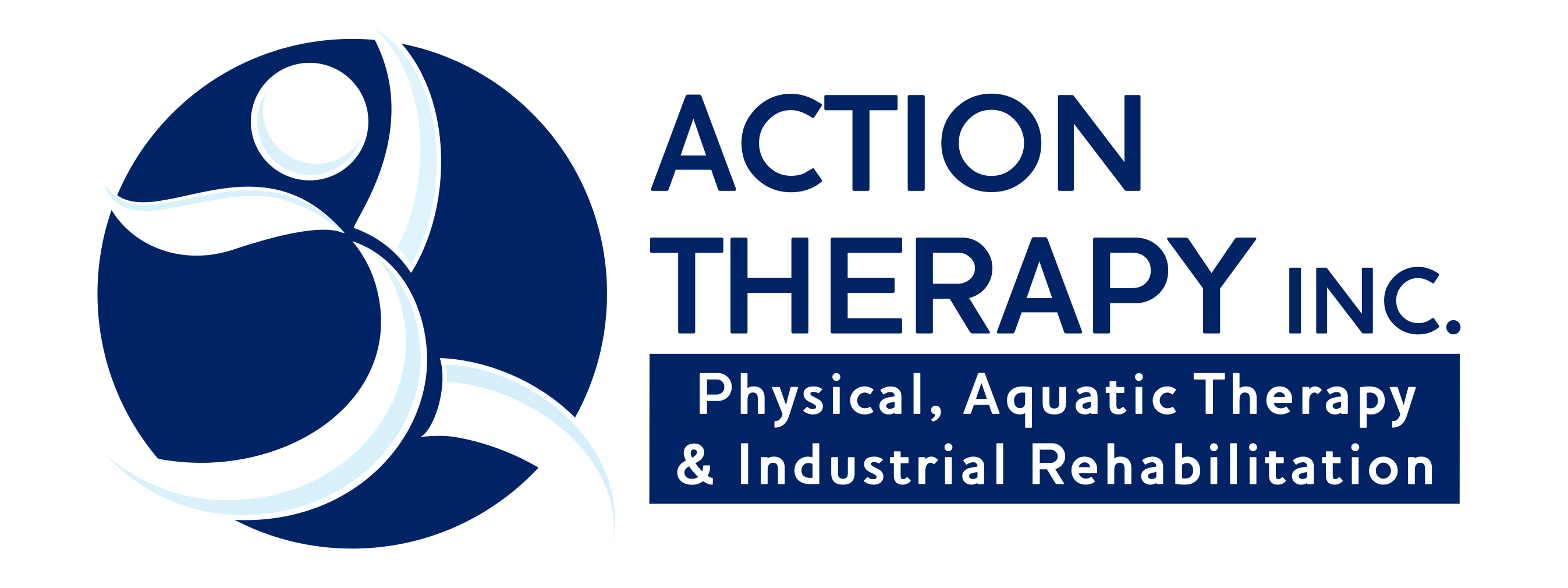
Trigger Point Dry Needling (TDN) is the use of solid filiform needles to relieve pain in muscles and connective tissue, which is why it is also known as “intramuscular stimulation” and “intramuscular manual therapy”. The aim of dry needling is to achieve a local twitch response to release muscle tension and pain. A twitch response is an involuntary spinal cord reflex in which the muscle fibers in the taut band of muscle contract, followed by an immediate and long-lasting relaxation.
When muscles develop trigger points, they often become shortened and can create compression on the structures around them, which can cause immense pain and impair your ability to lengthen and/or contract a muscle. Dry needling deactivates these trigger points, which draws white blood cells and plasma cells into the area and create a healing response.
Dry needling is an effective treatment for chronic pain with very few side effects. This technique is unequaled in finding and eliminating neuromuscular dysfunction that leads to pain and functional deficits. Dry needling is quickly becoming a very popular modality in medical and chiropractic offices nationally because of its ability to “deactivate” or “shut down” painful or knotted areas deep within muscles and connective tissue.
Dry needling works best for people with overuse injuries, chronic pain and sports injuries. It is not appropriate for people with new injuries that are swollen and acutely painful. And, it be appropriate for people with excessively loose joints. Contact us at any of our clinics to set up an appointment. We can then evaluate you and determine if dry needling or a different treatment will work best for your condition.
Frequently Asked Questions
Click the questions below for answers to commonly asked questions about dry needling.
What is Trigger Point Dry Needling?
Dry needling is an invasive procedure in which a solid filament needle is inserted into the skin and muscle directly at a myofascial trigger point. A myofascial trigger point consists of multiple contraction knots, which are related to the production and maintenance of the pain cycle.
Is dry needling similar to acupuncture?
There are many similarities and differences between dry needling and acupuncture. Licensed physical therapists in a growing number of states can use dry needling under the scope of their practice. Dry needling also falls within the scope of acupuncture practice. Physical therapists at Action Therapy Inc. are not licensed acupuncturists and do not practice acupuncture. In contrast to most schools of acupuncture, dry needling is strictly based on Western medicine principles and research.
How does dry needling work?
The exact mechanisms of dry needling are not known. There are mechanical and biochemical effects. Based on the pioneering studies by Dr. Jay Shah and colleagues at the National Institutes of Health, we know that inserting a needle into trigger points can cause favorable biochemical changes, which assist in reducing pain. It is essential to elicit so-called local twitch responses, which are spinal cord reflexes. Getting local twitch responses with dry needling is the first step in breaking the pain cycle.
What type of problems can be treated with dry needling?
Dry needling can be used for a variety of musculoskeletal problems. Muscles are thought to be a primary contributing factor to the symptoms. Such conditions include, but are not limited to neck, back and shoulder pain, arm pain (tennis elbow, carpal tunnel, golfer’s elbow), headache to include migraines and tension-type headaches, jaw pain, buttock pain and leg pain (sciatica, hamstrings strains, calf tightness/spasms). The treatment of muscles has the greatest effect on reducing pain mechanisms in the nervous system.
What side effects can I expect after the treatment?
Most patients report being sore after the procedure. The soreness is described as muscle soreness over the area treated and into the areas of referred symptoms. Typically, the soreness lasts between a few hours and two days.
What should I do after having the procedure done?
Our recommendations vary depending on the amount of soreness you have and on the individual response to the treatment. Recommendations may include applying heat or ice over the area, gentle stretches and modifications of activities.
How long does it take for the procedure to work?
Typically, it takes several visits for a positive reaction to take place. Again, we are trying to cause mechanical and biochemical changes without any pharmacological means. Therefore, we are looking for a cumulative response to achieve a certain threshold after which the pain cycle is disturbed.
Once I am feeling better, how often do I need to come back to maintain my progress?
The musculoskeletal system is under constant pressure from gravity, stress, work etc. A regular exercise program combined with good posture can prevent many problems. If the pain comes back, “tune-ups” are recommended to treat and prevent serious injuries.
For more information on intramuscular dry point needling, go to www.myopainseminars.com
